Seaweed is abundant on the coastlines and shallows of our island nation, an untapped wild food source offering an impressive nutrient profile and sustainable credentials. Usually confined to sushi and sandcastle decoration, should we be paying more attention to seaweed? I headed down to the south Devon shoreline for a seaweed foraging day with medical herbalist and seaweed enthusiast Flora MacInnes to find out.
At low tide the exposed rocks revealed a hidden world of seaweed in a myriad of shapes and shades. We gathered nori, perhaps the seaweed we are most familiar with as the outer wrapping of sushi; long, wild tethers of sea spaghetti; delicate sea lettuce; dulse and pepper dulse- a tiny unremarkable resident on the rocks with an incredible depth of flavour, reminiscent of truffles.
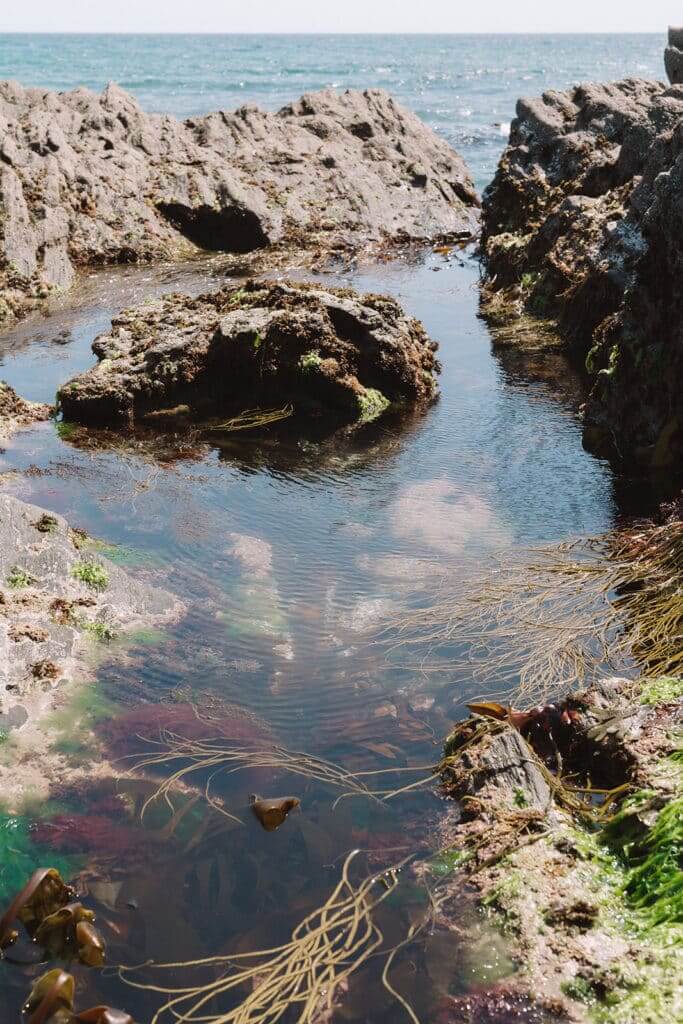
It’s easy to see why MacInnes has become so enthralled by the world of seaweed. “There’s something about the sea that feels so elemental, a last vestige of wilderness that feels such a far cry from our domesticated world,” she says, but the benefits of seaweed are compelling too.
Seaweed is incredibly nutrient dense, with some containing 10 to 100 times more vitamins and minerals than land plants, due to the mineral rich marine habitat it grows in. Notably, seaweeds are a rich source of iodine, an important nutrient for thyroid health which is often low in our Western diets. Seaweeds are also rich sources of vitamins A, D, E, K, C, B1, B2, B9, B12 and essential minerals calcium, iron, iodine, magnesium, phosphorus, potassium, zinc, copper, manganese and selenium. Though nutrient status varies between species.
The plethora of seaweeds you see may look numerous, but seaweeds fall into three categories – brown, green and red.
Brown seaweeds contain a compound called fucoxanthin which has been shown to possess anti-inflammatory, anti-obesity and anti-cancer properties. Red seaweeds are generally the highest in protein, Flora tells me that red seaweed dulse is particularly popular with vegans due to the salty umami taste, offering the option of a ‘DLT’ sandwich (with dulse replacing bacon). Green seaweeds contain compounds called ulvans, which can help regulate the immune system. MacInnes tells me she uses green seaweeds with patients with immuno-deficiencies in her herbal medicine.
Seaweeds really are true superfoods, and the beauty of them is that they are freely available to forage. They have been gathered and eaten by coastal communities throughout history. MacInnes tells me there is archaeological evidence of seaweed consumption from Monte Verde in Chile, widely accepted as the oldest settlement in the Americas, where seaweed carbon dated at around 14,000 years old has been found.
It’s important to note that when harvesting seaweed, you want the stuff that is still alive and tethered to the rocks, not the seaweed floating in the sea or washed up on the beach. The trick is to harvest seaweed carefully with scissors, taking care not to disturb the holdfast (where it attaches to the rock) and leaving plenty to ensure regrowth. MacInnes describes it to us as ‘giving the seaweed a haircut’, leaving at least a third remaining and avoiding over-harvesting from any area.
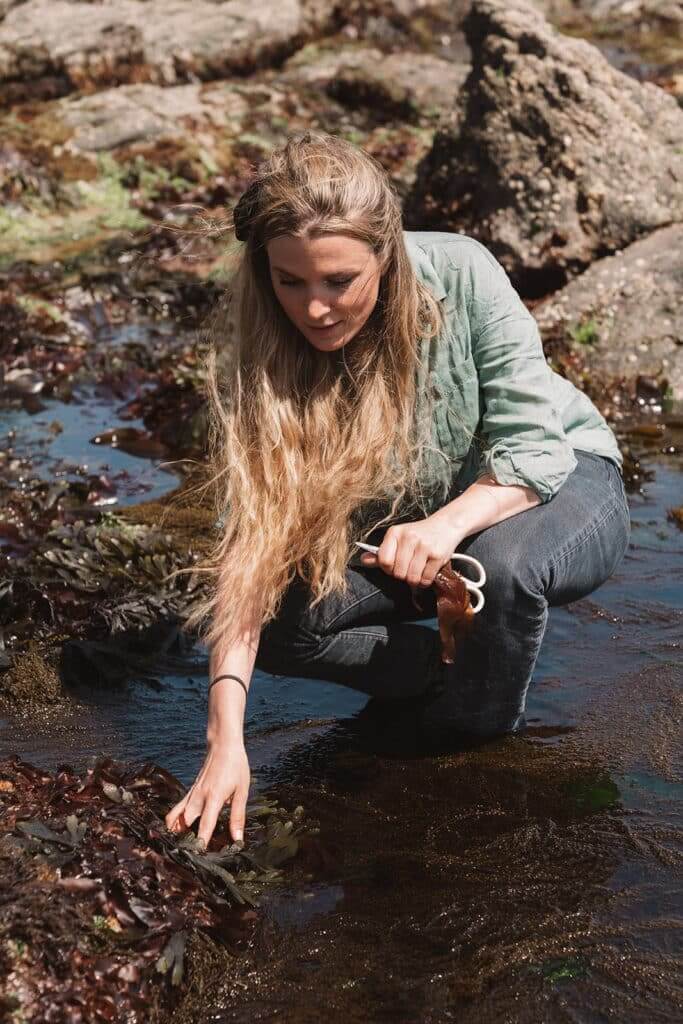
I pose an important question to MacInnes, are there any poisonous seaweeds in the UK? Thankfully not, she tells me. Though not all are edible; there are four which contain sulphuric acid. “These desmarestia species cause burning and tingling in the mouth that would give you a very clear indication to avoid them, but they are not easily confused with the edible species you’ll be looking for.” This makes foraging seaweed much more accessible than fungi, with many poisonous possibilities to avoid.
I’m also interested to know, where should people start when looking to start foraging?
“A great seaweed for beginners is sea lettuce, which takes its name from its uncanny resemblance to lettuce with its crinkly edges and shape – it’s also got a lurid, bright green colour that makes it’s easy to spot and it’s brilliant for novice seaweed eaters as it has a very mild and pleasant salty taste,” she says. MacInnes loves using it as a wrap, pickling it in vinegar and serving it on a cheeseboard and drying it out to make seaweed flakes that can be added to dishes for nutrition and flavour (it’s rich in iron, magnesium, and copper and calcium).
I return home from foraging laden with seaweed to dry and experiment with. MacInnes’s passion and enthusiasm is certainly contagious, and I’ve caught the bug. The sea lettuce is delicious dried – it naturally forms snack sized, crispy, salty thins and I’m enjoying the dulse dried too. The pepper dulse I have dried and am using in risottos and pasta dishes to add a salty almost truffle-like flavour. Sea spaghetti fresh or rehydrated tastes wonderful with sesame oil and tamari and is surprisingly filling due to the incredible fibre content. It’s safe to say I’m a seaweed convert.
If you’d like to head out on a seaweed hunt of your own, equip yourself with an identification guide, a bag or bucket , some scissors and check out the tide times on a clean rocky beach near you.
Courses on seaweed foraging with Flora MacInnes (from £63 for a day course with lunch) are available over Summer/Autumn 2023.
From seaweed to sea buckthorn
Getting into the coastal foraging mood? You could try sea buckthorn, bright orange berries with plenty of nutrition. They are incredibly rich in vitamin C, along with other nutrients and essential fatty acids.
The berries grow on small shrub-like bushes in coastal areas but be warned, they are very sour! Try juicing them and using this in dishes, or infusing them in apple cider vinegar for a nutritious, citrus-y base for dressings. Alternatively, cut out the effort and buy direct from a specialist such as the Cornish Seaberry Company, whose ‘VitaminSEA’ juice blends home-grown seaberry juice with apple juice to take the edge off the acidity. Berries are grown in orchards managed under agroecological and regenerative practices, restoring soil health via mulch and grazing sheep between ‘alleys’ of trees.

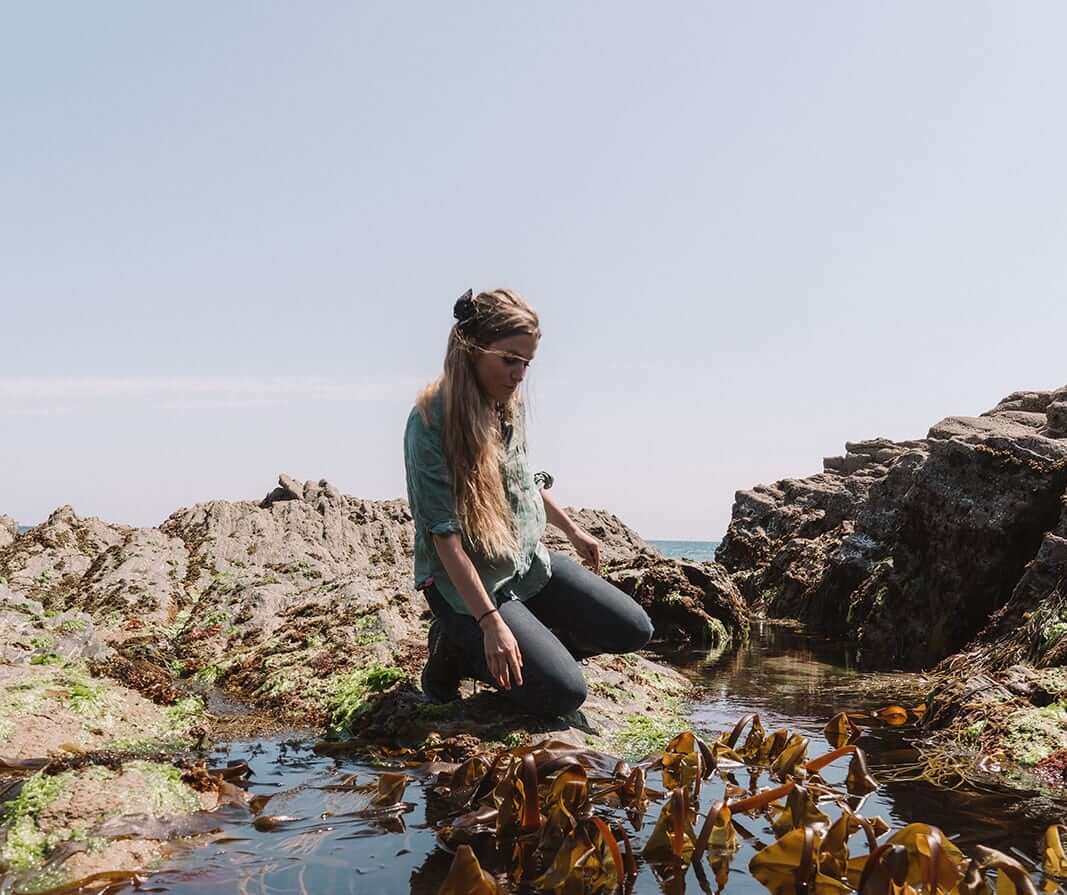
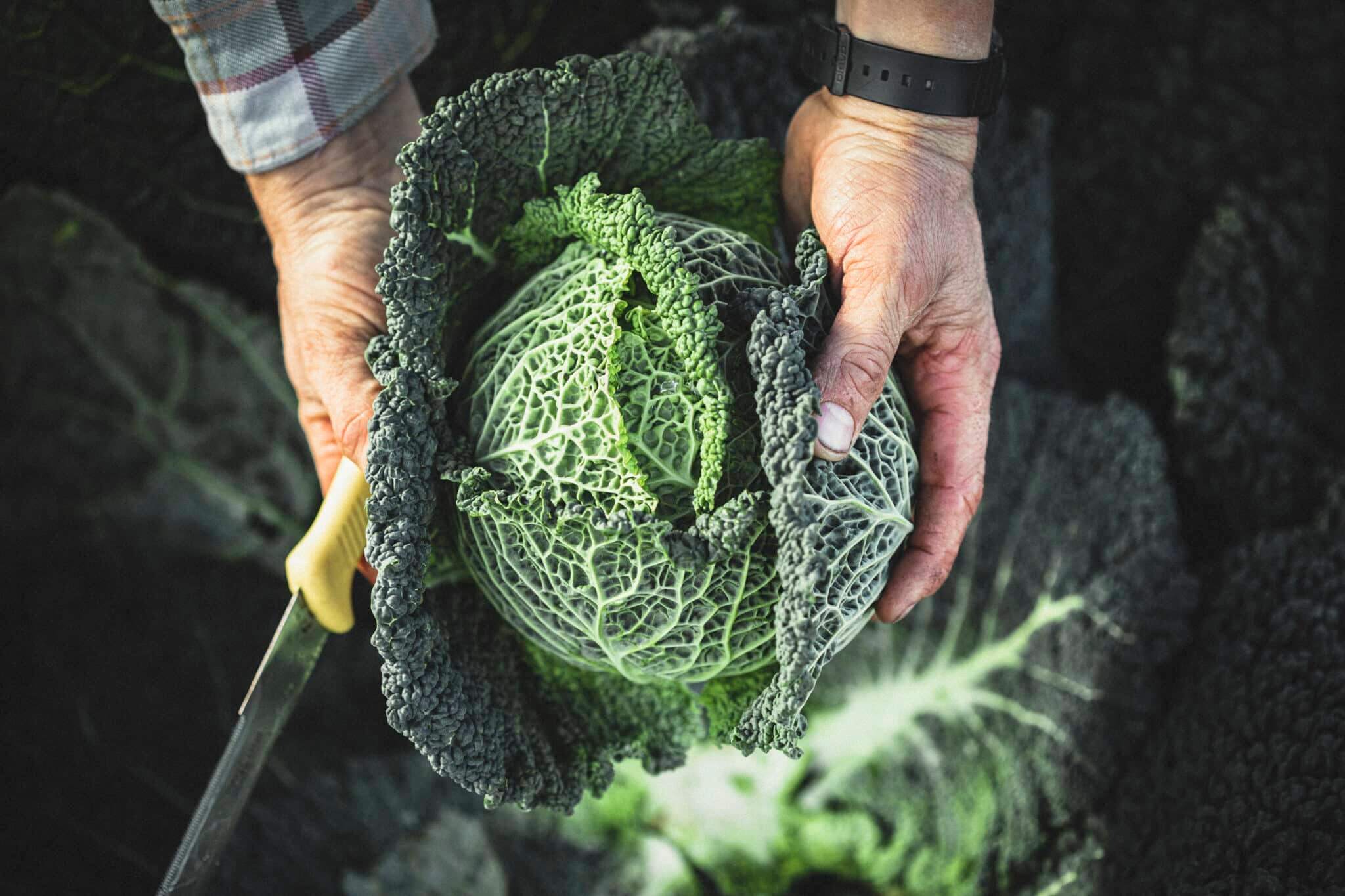

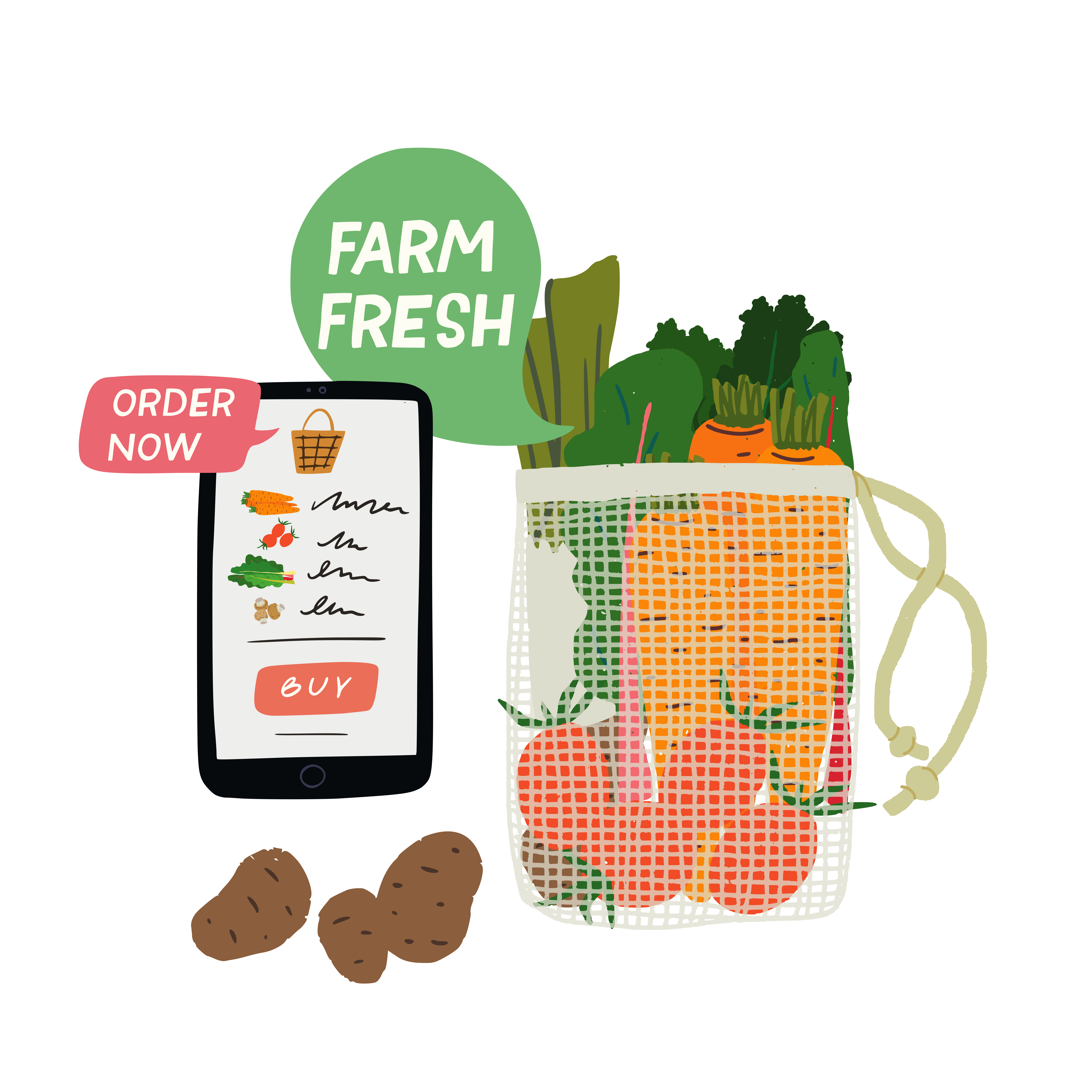
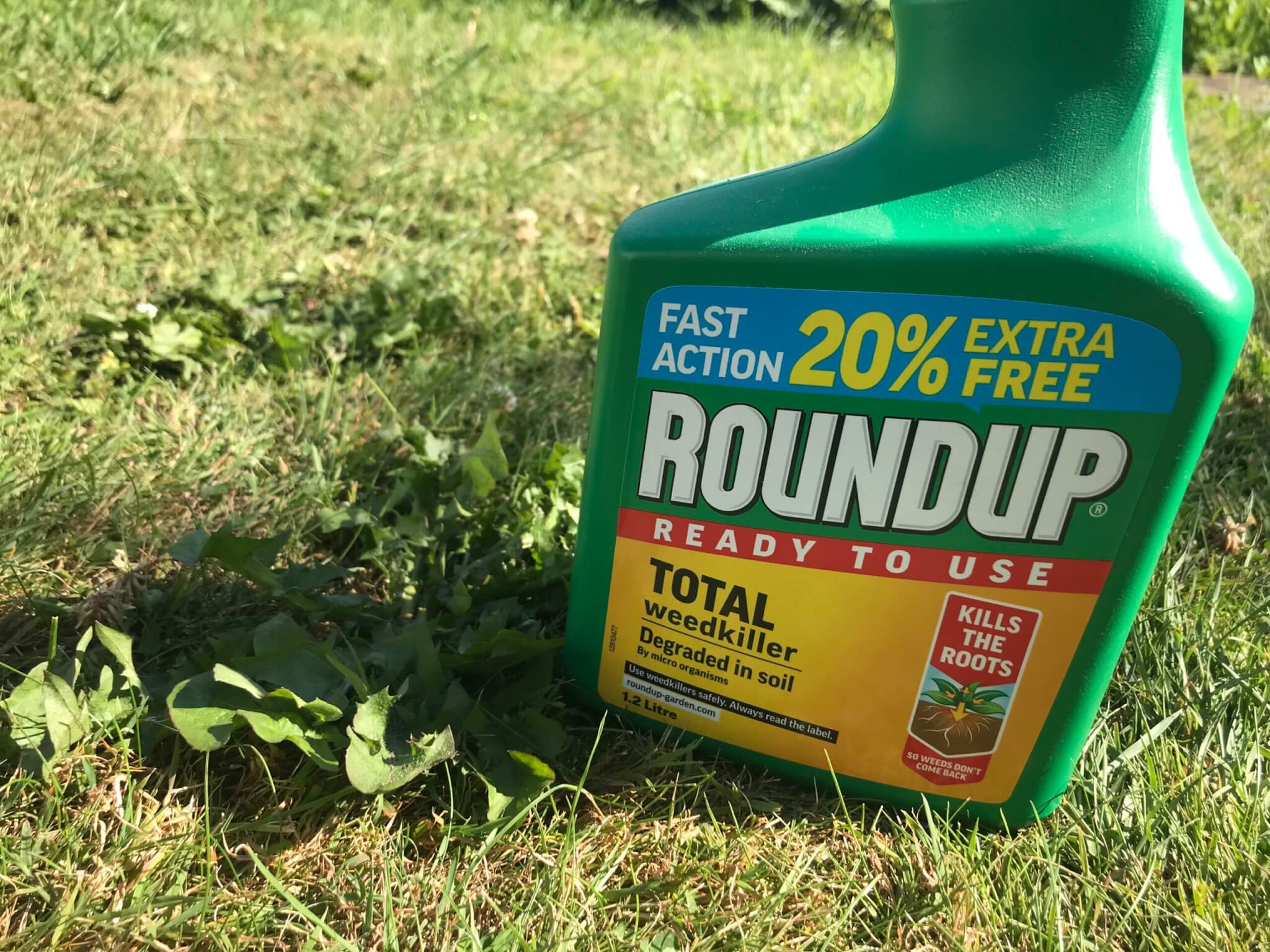







Sorry folks, but right now there isn’t such a thing as a clean enough beach.
Our entire coastline is suffering from pollution brought by farm slurry and sewage and the criteria for testing are too feeble, so even Blue Flag beaches will be tainted – and particular tides and wind directions sweep along from outfalls further round the coast.
Bacteria-laden biofilm remains in damp sand or shingle and clings to everything, so all foraging potentially will lead to illness.
It’s tragic having to write this. I would love to get healthy seaweed on the table.
@Sparclear
Surely rinsing and cooking will get rid of any pathogenic bacteria?
From Uist – which possibly does have clean enough beaches: see exactly how to harvest sustainably here.
BBCScotland/videos/2256145981260992/
sorry, dud link. Can’t see where to edit it.
This one works better
https://youtu.be/4AX6u1AyQGo
Advice from water quality scientist who helps us at Marinet, Brian Morgan:
Where seaweed grows, it soon carries biofilms of bacteria. It also grows through beds of sediment, and sea grasses, which also horde bacteria.
Even our so called treated sewage still contains live faecal bacteria, and it takes quite a long time for these to die in the open sea and in sunlight.
These are held in biofilms which encase especially the stems of growing seaweed.
Seaweed is safe if properly cooked, but the transmission then comes from collection and transport, which cannot practically be done in a sterile manner.
These problems can be overcome, but I doubt solutions would be maintained in a commercial setting.
The runoff from especially cattle and poultry farming is more pathogenically hazardous than our sewage.
Not to mention the growing nightmares of chemical pollution.
Even the special care taken of shellfish beds, as shown in Cefas Sanitary Surveys, using tertiary treatments, would not really help.
@Sparclear
Is this an issue worldwide? I’m thinking of all the Japanese toasted nori my cat and I like to snack on.
This is really interesting, and sad to hear, an important consideration.
Ani, alas yes. Consumers are dependent on batches being adequately tested before they reach the market.
Appreciation of seaweed as a foodstuff will swell the numbers of people now campaigning to protect Ocean properly. Marine Protection Zones are being set up & they soon become as precious as land-based nature reserves, increasingly popular because fishing communities see how soon they enrich the sea life. Advocacy for those whose livelihoods depend on the marine environment means offering them stewardship and universal basic income while the projects unfold.
Hello there, I forage seaweed in Scotland (usually on Uist where my husband is the GP). Alexander (video) forages for a seaweed company, I think, ASCO. Nobody forages high end seaweeds commercially on Uist and this is excellent news because to be candid there wouldn’t be enough ( e.g. pepper dulse). I am wary of bigging up the nutritional properties of seaweed because few claims are evidence based. Seaweed does however taste delicious. Sea Lettuce is (to my taste buds) strong and and has its challenges (bloom) be careful where you forage it – go for intertidal rock pools. My beginner seaweed suggestion is laver (not nori – different species but of that ilk). It drys well and has a mild hint of the sea. It is easily accessible because it grows in the intertidal zone and foraging doesn’t require a low (spring) tide. If it’s okay to suggest a book – I’m the author of Seaweed in the Kitchen. I discovered a wonderful Victorian Seaweed Sisterhood in my research – it’s my fave chapter. One has to admire ladies taking the sea air (health) who rolled up their petticoats and foraged seaweeds albeit for artistic not cookery purposes. Forage enough for your own supper table no more 🙂 There is some seaweed chat here: https://www.bbc.co.uk/programmes/p07hm5yp
Wonderful tips and resources, thank you for sharing Fi!